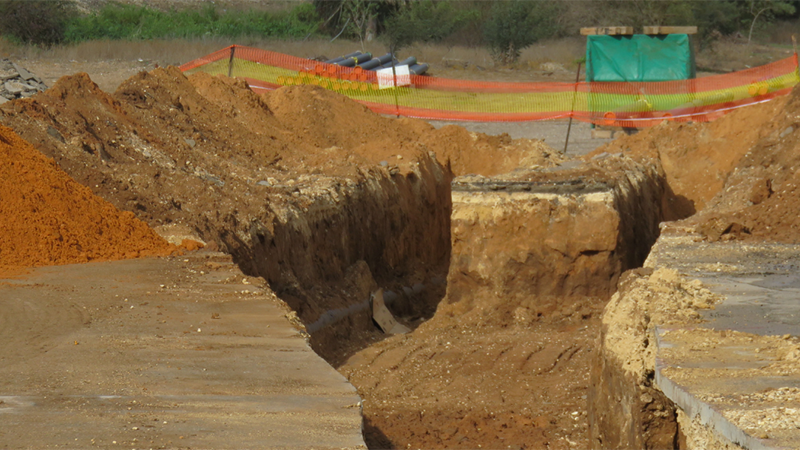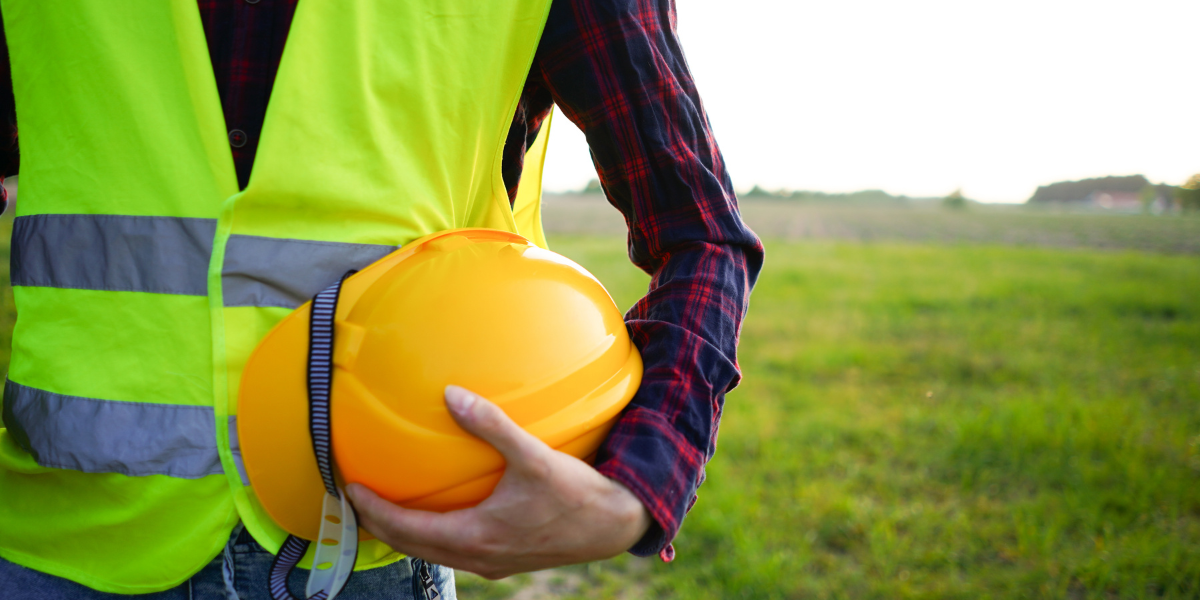Safety 101: How to Prevent Soil Collapse During Excavation

Knowing how to prevent soil collapse during excavation is a non-negotiable skill on any construction site.
Soil stability is no small matter. Trench walls can give way without warning and put workers at serious risk of cave-ins and heavy debris. Applying protective systems such as trench shields and using solid sloping and shoring techniques can make all the difference for safety.
In this guide, we’ll break down the key strategies for trench safety, explore OSHA standards, and highlight how tools like drum grinders from RockZone Americas can enhance efficiency on the job. Let’s dig into the steps that set a strong foundation for any excavation project.
Key Takeaways
- Preventing trench collapse starts with strategic planning, the right equipment, and daily safety checks.
- OSHA standards, protective systems, and trained teams are essential for safe, stable trench work.
- RockZone’s advanced tools make tackling tough trenching jobs safer and more efficient.
Why Trench Collapse Occurs
Trench collapses are one of the deadliest hazards on excavation sites, often striking without warning. Recognizing the risks is essential to prevent a trench collapse and keep workers safe. Here’s what you need to know to understand and address these dangers effectively.
Soil and pressure dynamics. Soil pressing against trench walls creates immense pressure, which increases as the depth of the trench grows.
This force, combined with nearby heavy equipment, can overwhelm trench walls and lead to rapid cave-ins. When these walls fail, the consequences are severe and immediate.
Soil type and stability. Some soil types, such as loose silt or sandy soils, are far less stable than dense clay or stable rock. Without proper protective measures, trench walls in these soils are likely to give way.
Environmental factors. Weather is a constant factor on any trench site. Rain and flooding increase soil weight and weaken trench walls, making collapses more likely. Even a slight increase in soil moisture can tip the balance, especially in already unstable soil.
OSHA Standards that Keep Trenches Safe
OSHA’s regulations are essential for preventing trench collapses and keeping trench workers safe. Compliance is mandatory and a proven way to protect lives and avoid the serious risks associated with trenching work.
Protection systems for deep trenches. To prevent trench collapse, OSHA requires protection systems for any trench over five feet deep. These systems are essential to keep trench walls intact and prevent cave-ins that can occur suddenly.
The only exception is stable rock, which can support vertical walls without additional support.
Daily checks by a competent person. OSHA mandates that a competent person inspects trenches daily to assess conditions like soil stability, trench depth, and any weather changes.
This inspector must be trained to spot risks and have the authority to halt work and make corrective changes if needed.
Daily checks are critical to identifying early warning signs and stopping potential collapses before they happen.
Training for all workers. All trench workers must be fully trained in OSHA’s safety protocols, including hazard identification, emergency exits, and proper equipment use. This training is essential for site workers to understand the risks and actively contribute to a safe excavation environment.
Top Systems to Prevent Trench Collapses
The right protective systems are crucial to prevent trench collapses and safeguard trench workers from serious injuries. OSHA requires that construction sites use specific methods to reinforce trench walls during excavation.
Here are three powerful techniques that enhance trench safety.
Sloping for safety. Sloping involves digging trench walls at an angle to reduce soil pressure. This technique forms a funnel shape that directs soil weight away from the trench wall, lowering the risk of collapse.
The slope angle depends on factors like soil type and depth. Looser soils need a gentler angle, while denser soils can support a steeper slope. This straightforward method is effective in preventing cave-ins and is widely used to protect workers.
Stabilizing with shoring. Shoring uses metal plates or timber braces to reinforce trench walls and prevent collapses. This method provides solid support against soil pressure, especially in deeper trenches where the weight of the soil is greater.
Shoring is ideal for unstable ground or sites where heavy equipment could add pressure. The sturdy metal plates create a reliable barrier that keeps the trench stable and safe for workers.
Shielding with trench boxes. Trench boxes, also known as trench shields, are heavy metal frames placed inside the trench to protect workers from potential cave-ins.
Unlike shoring, trench boxes don’t support the walls directly. They act as a barrier, containing any soil that might fall in and keeping it from reaching workers. Adjustable to various trench dimensions, trench boxes offer flexible and critical protection across different trenching sites.
Critical Steps for Safe Excavation
Preparation is everything when it comes to trench work. By taking these steps before digging, you reduce the risk of trench collapse and keep your trench workers safe from potential hazards. Here’s what to do:
Test the soil first. Start with a soil test to understand what you’re dealing with. Each soil type has unique stability and support needs. Unstable soils, like loose sand or silt, require more reinforcement, while stable clay allows for steeper trench walls.
Knowing this upfront helps you choose the right protective systems to safely handle soil weight and prevent a trench collapse.
Mark all utility lines. Identify and clearly mark utility lines before digging. This step prevents accidental contact with buried lines, which can lead to electric shocks, gas leaks, and other hazards.
Utility line identification protects trench workers and minimizes risk at the construction site.
Place equipment wisely. Keep spoil piles and heavy equipment a safe distance from the trench edge—at least two feet away. An added weight near the trench wall can increase the risk of a collapse, especially in loose soil.
This simple step prevents unnecessary pressure on trench walls, which lowers the chances of cave-ins and helps your team stay safe.
Must-Do Trench Safety Inspections
To prevent trench collapses, consistent monitoring is a must. Here’s what to focus on:
Test oxygen levels. In deeper trenches, low oxygen levels or toxic gases can create serious hazards. OSHA requires daily checks of oxygen levels, especially in areas with limited airflow.
Testing the atmosphere daily helps avoid risks like brain damage from oxygen deficiency and keeps trench workers safe from hidden hazards.
Control water buildup. Water in a trench adds weight and pressure to trench walls. This makes them vulnerable to collapse.
Unexpected rain or groundwater seepage can compromise stability, so plan for drainage and have a quick method to remove excess water. Managing water accumulation reduces collapse risks and keeps conditions stable.
Ensure safe exits. Any trench that is four feet deep or more needs secure entry and exit points positioned within 25 feet of workers. OSHA requires clear exits, such as ladders or ramps, to allow fast escape if walls begin to fail.
Safe exits are both about compliance and being ready when it matters most.
Trench Safety Equipment Checklist

The right tools make a major difference in protecting workers and keeping trench sites secure. With the right safety precautions in place, you’ll meet OSHA regulations and minimize risks on-site. Here’s the essential gear every trench setup needs:
Shield with trench boxes. These are essential barriers that protect against collapsing soil. Available in various sizes, trench shields reinforce trench walls and create a secure area within the trench. If soil shifts, trench boxes contain it and prevent it from reaching workers.
Reinforce with hydraulic shoring. Hydraulic shoring systems are ideal for stabilizing trench walls by applying even pressure to hold them intact, particularly in deeper or less stable trenches.
Equip with PPE. Personal protective equipment (PPE) is a must for trench work as it safeguards workers against serious injuries. Helmets protect against head trauma, while harnesses and lifelines offer critical support in emergencies.
In the event of a collapse, PPE can significantly reduce the severity of injuries and give workers the added protection they need on-site.
Other Hazards to Watch Out For
While trench collapses are a primary concern, several other hazards can threaten worker safety during trench work. Understanding these additional risks helps prevent accidents, reduce injuries, and protect the occupational health of every team member.
Heavy equipment hazards. Working near heavy equipment brings a high risk of accidents from falling materials, swinging machinery, or unexpected contact. These incidents can lead to severe injuries, including broken bones.
To minimize these dangers, operators should keep equipment a safe distance from trench edges, and workers should avoid areas with active machinery. Consistent communication and situational awareness are critical to preventing accidents and protecting every worker on-site.
Toxic gas exposure. Trenches, especially in urban sites, can collect dangerous gases like methane or carbon monoxide. These gases are a serious threat to occupational health and can quickly lead to life-threatening outcomes if not detected.
Regular atmospheric testing and reliable ventilation are key safety precautions that protect workers, ensuring oxygen levels stay safe and air quality remains high.
Falling objects. Tools, debris, or materials from above the trench can fall, which poses a direct risk to workers below. Protective solutions like trench boxes, canopies, and overhead netting act as effective barriers, preventing injuries from above-ground hazards.
Precision Equipment for Safer, More Stable Trenches
When it comes to trenching through unstable soil or hard rock, stability is a top priority. Weak soils, heavy rock, and challenging conditions can lead to trench collapse, putting trench workers at risk and delaying your project.
RockZone Americas understands these risks and offers powerful equipment like Rockwheels and cutter buckets that make trench excavation safer and more efficient. Our tools are designed to cut precisely so you can create secure trench walls without compromising productivity.
Equipped with RockZone’s advanced attachments, you can tackle difficult trenching tasks with confidence, reinforce stability, and protect your team. With 50 years of experience, we’re here to support your project with reliable equipment. Call RockZone Americas today to explore the best tools for your excavation needs.
Summary
Preventing trench collapse demands solid planning, constant vigilance, and the right protective measures.
From regular inspections to targeted training, each step helps reduce risks, protect workers, and ensure smooth, compliant excavations. Following OSHA regulations and taking swift corrective actions keeps trench sites secure and operations efficient.
With advanced equipment like Rockwheels and Cutter Buckets, RockZone Americas empowers your team to tackle tough trench work confidently and safely. Choose RockZone for reliable solutions that strengthen your site’s stability and safeguard your crew.
Frequently Asked Questions
What are the different methods for the prevention of soil collapse?
Preventing soil collapse involves using protective systems like sloping, shoring, and shielding with trench boxes.
Sloping directs soil weight away from trench walls, shoring adds structural support, and shielding with trench boxes provides a secure barrier to protect workers from falling soil. Together, these methods minimize collapse risks in excavations.
What are the control measures for the collapse of excavation?
Control measures for preventing excavation collapse include daily inspections by a trained, competent person, testing soil stability, using protective systems such as trench shields or shoring, and placing heavy equipment at a safe distance from the trench edge.
These steps keep excavation sites secure and lower risks for workers.
What are the 5 P’s of safe excavation?
The 5 P’s of safe excavation are Planning, People, Protection, Procedures, and Personal Protective Equipment (PPE).
These elements cover everything from thorough site assessments and trained personnel to protective systems, detailed safety protocols, and proper PPE to ensure a safe and compliant excavation environment.
